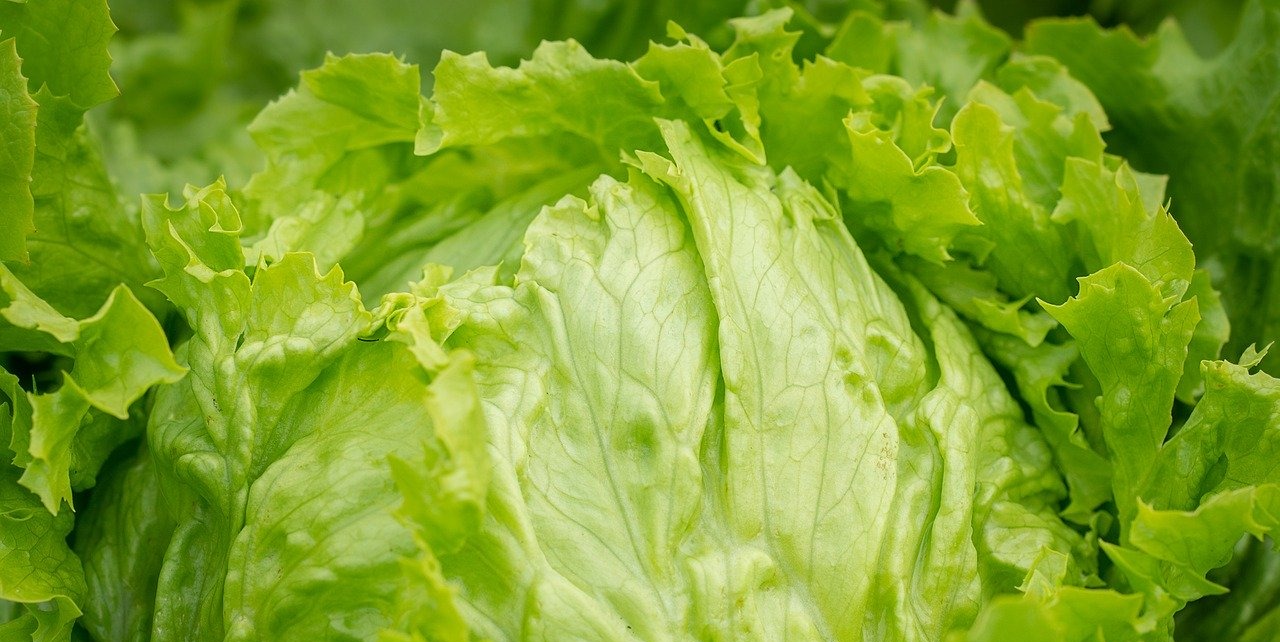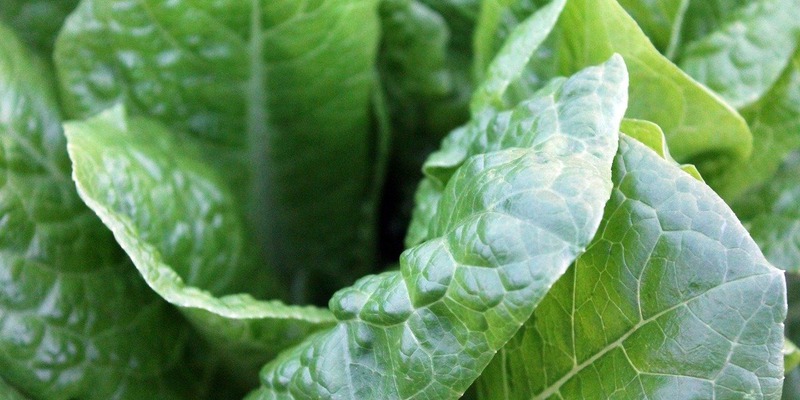Is iceberg lettuce a healthy leafy green?

Iceberg lettuce is a common but controversial salad. Although it is a staple in many classic salads and sandwiches, it has also drawn criticism from nutrition-conscious consumers as other greens such as kale and spinach take center stage in the diet.
Despite being labeled as a nutrient-poor alternative to other green salad, iceberg lettuce has several benefits and definitely deserves a place in a balanced diet. In fact, it is rich in various nutrients and can promote bone health, improve vision and accelerate weight loss.
So is iceberg lettuce bad for you? Read on to learn all about this popular leafy green.
What is iceberg lettuce?
Iceberg lettuce is a type of lettuce known for its mild flavor and crunchy texture. It has a pale green color and a round head, similar to a cabbage, for example.
Thanks to its crunchy texture and versatility, it has long been considered a staple of salads and is often used as a topping for burgers, sandwiches and wraps.
Despite its reputation as a nutritionally insignificant ingredient, it contains several important nutrients and can definitely be a healthy addition to your daily diet.
Nutrition Facts
Although iceberg lettuce is low in calories, each serving contains a good amount of fiber, vitamin K and vitamin A.
One serving (about 72 grams) of shredded iceberg lettuce contains the following nutrients:
- 10.1 calories
- 2.3 grams carbohydrates
- 0.6 grams protein
- 0.1 grams fat
- 0.9 grams fiber
- 17.4 micrograms vitamin K (22 percent DV)
- 361 international units of vitamin A (7 percent DV)
- 20.9 micrograms folate (5 percent DV)
- 0.1 milligrams manganese (4 percent DV)
- 2 milligrams vitamin C (3 percent DV)
- 102 milligrams potassium (3 percent DV)
Iceberg lettuce nutritional information also contains a small amount of vitamin B6, iron and calcium.
1. promotes weight loss
Since each serving of iceberg lettuce contains only a small amount of calories, adding this tasty ingredient to a healthy diet could potentially promote weight loss.
According to one study, increased fruit and vegetable consumption was associated with improved weight and fat loss, suggesting that adding healthy vegetables - like iceberg lettuce - to your diet could be beneficial if you want to lose weight.
2. keeps bones strong
One of the most important benefits of iceberg lettuce is its vitamin K content. While perhaps best known for its ability to prevent blood clotting, vitamin K also plays a key role in bone health.
Vitamin K is intimately involved in bone metabolism, helping to increase levels of a protein needed to maintain calcium stores in bones. According to one study, lower intakes of vitamin K were associated with decreased bone mineral density in women. This shows why it's incredibly important to include plenty of healthy vitamin K foods in your diet.
3. low carb replacement
If you're on a low-carb or ketogenic diet, many high-carb foods like bread, wraps, and rolls are usually not suitable. Fortunately, iceberg lettuce has a crunchy, firm texture that makes it a great low-carb substitute for wraps, sandwiches, and burgers.
Thanks to the low amount of carbohydrates in iceberg lettuce, you can still enjoy many of your favorite foods on a low-carb diet by swapping them in with iceberg lettuce. Not only will this help you keep your carbohydrate consumption in check, but the small amount of calories in iceberg lettuce can also contribute to weight loss.
4. supports eye health
Green iceberg lettuce is an excellent vitamin A food, containing about 7 percent of the recommended daily value in each serving. Getting enough vitamin A in your diet is absolutely essential for maintaining healthy vision and may even help protect against some eye diseases.
In particular, macular degeneration is a common condition characterized by the deterioration of the macula, the central part of the retina. It is considered the leading cause of vision loss and is thought to be even more common in the population than cataracts and glaucoma.
In addition to vitamin A, research suggests that many other nutrients found in lettuce may be beneficial for eye health. For example, in one study, older adults who took a supplement containing vitamin A, zinc, copper, vitamin C and vitamin E had a 25 percent lower risk of developing advanced age-related macular degeneration over a six-year period, thanks to these eye vitamins.
The comparison with other salads

So how does iceberg lettuce compare to other greens, such as the health benefits of kale, arugula or spinach?
Similar to other types of lettuce, iceberg lettuce is low in carbohydrates and calories. It also provides plenty of fiber in each serving, along with other important micronutrients like vitamin K, vitamin A and vitamin C.
However, the main difference between iceberg lettuce and cabbage and other varieties is its nutrient content. Because iceberg lettuce has a high water content, it contains a lower amount of several important vitamins and minerals.
For example, comparing the nutritional value of iceberg lettuce to that of romaine lettuce, a single serving of romaine lettuce contains 11 times more vitamin A, five times more vitamin C, and almost three times the amount of vitamin K. In contrast, other varieties such as spinach and kale contain more manganese, folic acid, and magnesium.
Use
Iceberg lettuce is widely available in most supermarkets and grocery stores and can be found in the produce section along with other lettuce varieties.
Look for a head of lettuce with no visible spots or signs of spoilage on the outer leaves. Be sure to wash it thoroughly before using and store it in the refrigerator to extend its shelf life as long as possible.
The most popular way to use lettuce is, of course, to top it with fruits, vegetables, nuts, seeds and dressings of your choice. You can also mix it with other green vegetables to add a little variety and color to your meal.
Iceberg lettuce has a crunchy, crisp texture that also works well as a substitute for burger buns and wraps to reduce the carb content of your favorite recipes. Alternatively, try adding a bit of tuna salad, sandwiches and grain bowls to add some extra nutrients to your dish.
Light cultivation

Iceberg lettuce is easy to grow, making it a popular crop for novice gardeners and green thumbs alike.
If you want to grow your own iceberg lettuce, start by planting the seeds in a shallow tray and covering with some potting soil. Be sure to plant about six to eight weeks before the last spring frost to ensure optimal growing conditions.
Place the pot in a window or area where it will receive about 12 hours of sunlight daily and keep the soil moist by watering regularly.
After six to seven weeks, the plants can be moved outdoors. Make sure the plants have sun protection for the first few days, as they can rot or wilt in hot weather.
Once the head has formed, you can harvest it. Starting to harvest before a flowering stem appears is key to prevent the plant from developing an unpleasant bitter taste.
Recipes
The ways to eat this type of lettuce go far beyond simple iceberg lettuce. You can also use it in place of wraps or rolls, toss it on your favorite sandwiches, or even use it as a simple but satisfying side dish.
Ntzen-packed and pre-cut salads are at a higher risk of contamination, so it's often preferable to use loose leaf lettuce instead.
Some people may also be allergic to lettuce, which can cause severe symptoms, including anaphylaxis. If you experience any unwanted side effects after eating lettuce, stop eating it immediately and talk to your doctor.
Finally, while iceberg lettuce can definitely fit into a healthy diet, it's important to remember that it's not as nutrient dense as other types of lettuce. Therefore, it's best to combine it with a variety of different leafy greens and other vegetables to round out your diet.
Conclusion:
Although it has often been criticized as a nutrient-poor leafy green, iceberg lettuce contains several important nutrients and can easily fit into a balanced diet.
In fact, the nutritional profile of iceberg lettuce is low in calories but contains a good amount of fiber, vitamin K, vitamin A and folate.
Thanks to its high water content and nutritional value, it can contribute to increased weight loss, promote bone strength and support healthy vision.
Like other types of leafy greens, iceberg lettuce is low in calories and carbohydrates. However, it also contains fewer vitamins and minerals than other varieties such as kale, spinach, arugula and romaine.
It is probably best known as a base for salads, but it can also be used as a topping for sandwiches or pan-fried and served as a delicious side dish.
More information
Always consult your healthcare provider to ensure that the information displayed on this page applies to your personal circumstances.

















